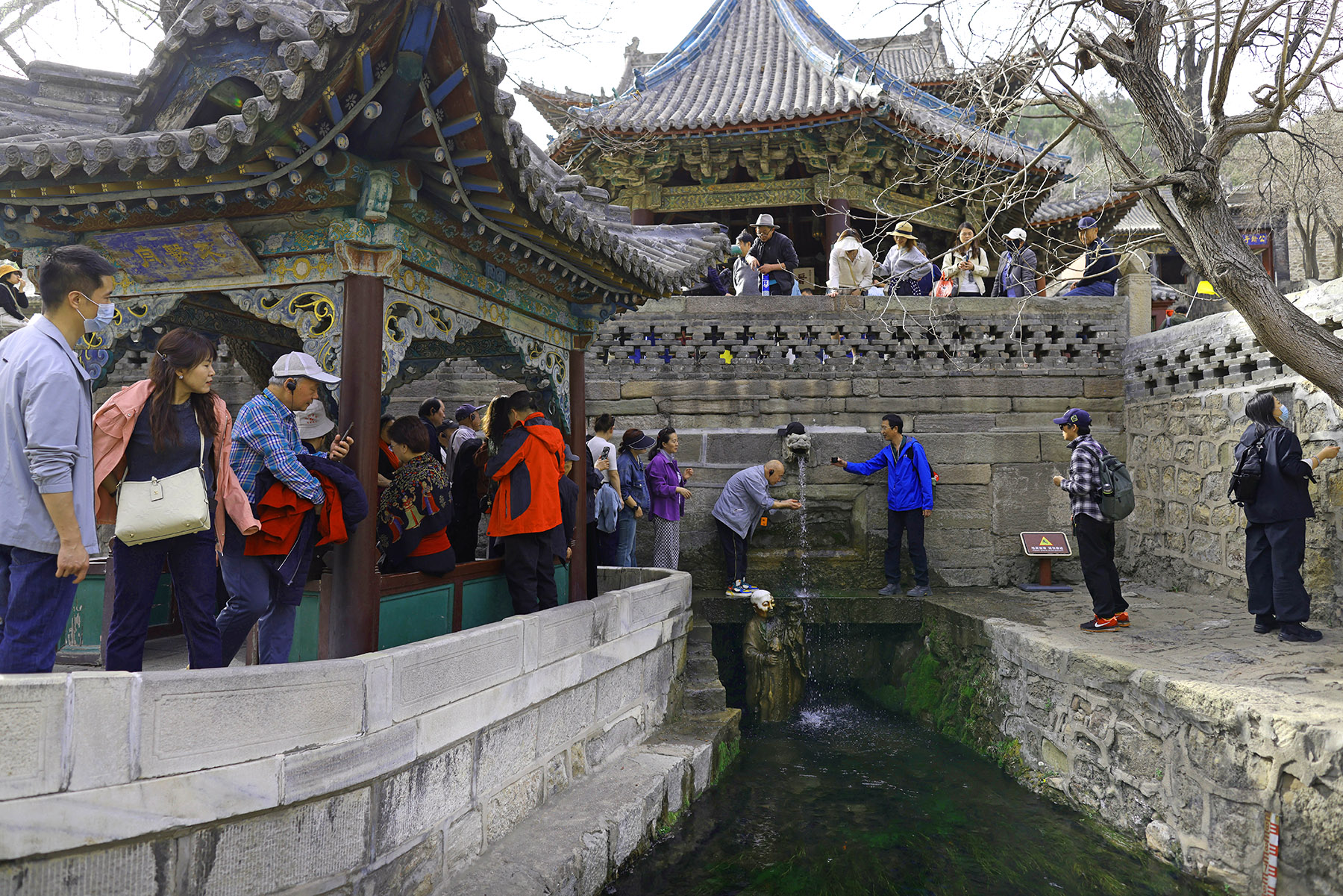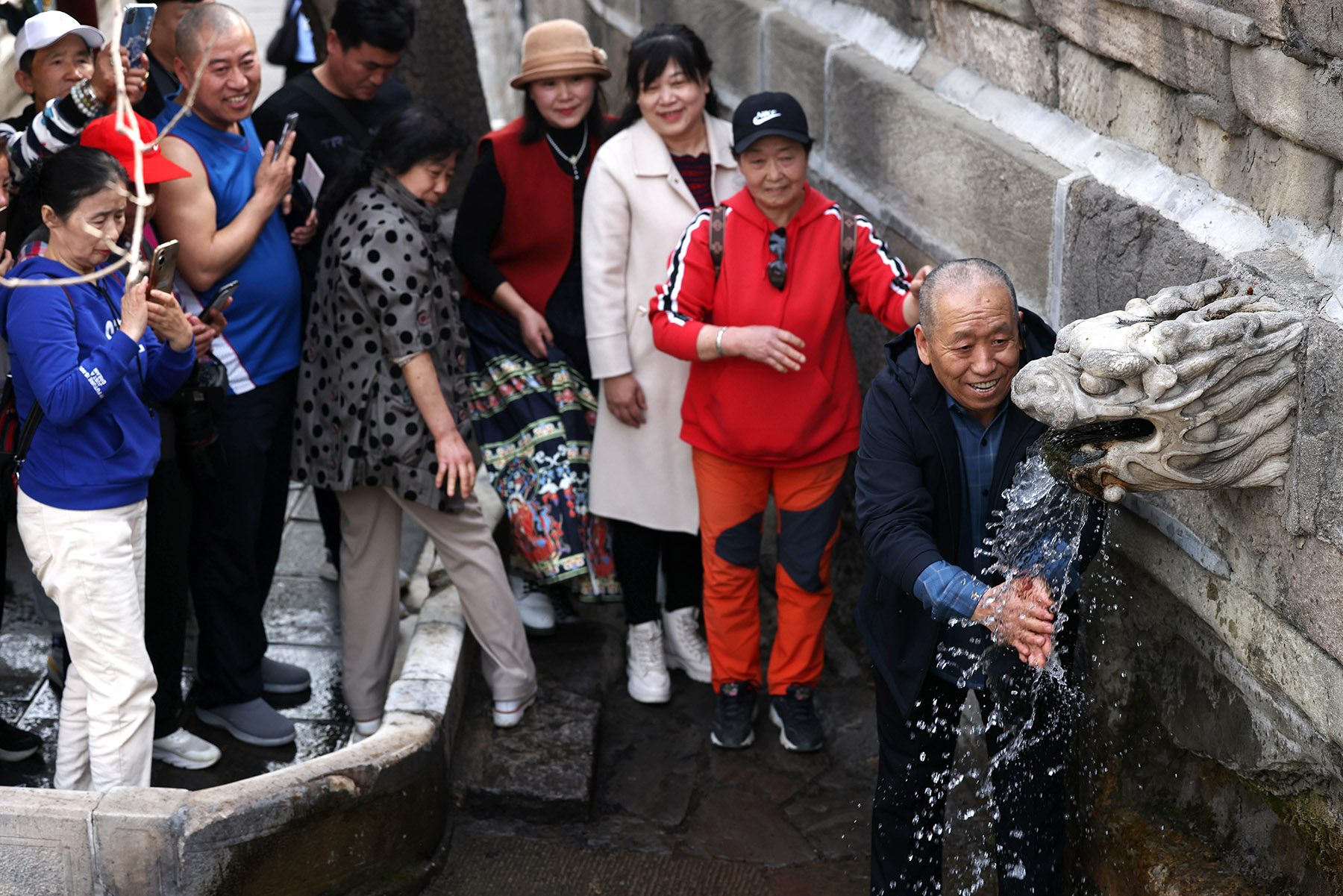30 years after Nanlao dried up, waters of ancient well flow once more

Over 1,200 years ago, renowned poet Li Bai wrote of Nanlao Spring at Jinci Temple: "The flowing water of Jinci is clean like jade."
Sadly, this flowing water dried up some 31 years ago due to the falling water table.
However, recently, several fountainheads of Nanlao Spring in Taiyuan, Shanxi province, have come back to life and the jade-like waters are flowing again, attracting numerous visitors.
Zhai Tianhu, 82, who has lived near Jinci Temple since childhood, welcomed the resurgence of the spring.
"The water flow is very strong this time," Zhai said.
"Seeing this water makes me very happy, so I often come back to take a look."
Excessive extraction of groundwater and the overdevelopment of coal mines in the surrounding areas led to the drying up of the spring in the 1990s.
After decades of persistent management and protection efforts, the spring finally began flowing again in May 2023, over three decades after it had stopped.
The groundwater level at Nanlao Spring, also known as the Never Aging Spring, is now over a meter over the height of several of the spring's fountainheads.

Also known as "the first spring of the Shanxi region", the spring has been used and admired for over 2,400 years.
It is located within Jinci, the earliest existing royal ancestral temple in China, established in the Western Zhou Dynasty (c.11th century-771 BC) to honor the founding marquis of the Jin State, Shuyu of Tang, and his mother, Yi Jiang.
At the end of last year, the Jinci Temple and Tianlong Mountain scenic area was designated a national 5A-level tourist attraction by the Ministry of Culture and Tourism.
"The resurgence of Nanlao Spring is a matter of great joy for the people of Shanxi," said Wang Runmei, a deputy to the 14th National People's Congress and Party secretary of the Taiyuan Public Facilities Construction and Management Center's No 2 Road and Drainage Maintenance Station.
READ MORE: Brushing history back to life
"This is a new achievement in ecological environment protection in the Yellow River Basin by Shanxi, and a significant milestone in groundwater management and spring protection in North China. It reflects the further improvement of Shanxi's ecological environment," Wang said.
She explained that following the spring drying up, Shanxi shut down nearby coal mines and enterprises that consume a lot of water, and carried out water resource replacement projects.
These efforts ultimately led to the resurgence of the spring.
Entrepreneur Zheng Weihua, on his first visit to Jinci, was deeply impressed by the spring's splendor. He said he was not only attracted by the spring but also greatly appreciated the ancient architecture and millennia-old cypress trees surviving at the site.
He said that the fresh air and rich cultural heritage make the area ideal for developing the healthcare industry.
ALSO READ: River's rebirth brings life to Shanxi
Guo Baoping, director at the Jinci Museum, said, "We actively cooperate with the water conservancy department to monitor the water flow of the spring every day, while also monitoring the water temperature and quality."
Shanxi, known as the "water tower of North China", serves as a water source conservation area for Beijing, Tianjin and Hebei province.
The project to revive Nanlao Spring embodies Shanxi's efforts in water management and water conservation, said Liu Yuwei, director of the Taiyuan Culture Relics Bureau. "Nanlao Spring carries deep cultural emotions and beautiful memories for the people of Shanxi," Liu said.
Contact the writers at zhuxingxin@chinadaily.com.cn


